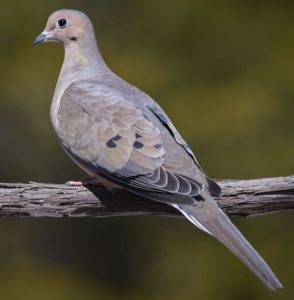Backyard Naturalist: Week #3
Where YOU get to be a naturalist in your own backyard.
 by Matt Porter
by Matt Porter
OAS Staff
As backyard naturalists, we are afforded an opportunity to also become stewards of the natural environments in which we find solace. Stewardship can start in your own backyard by doing things like increasing native animal habitat while removing invasive or noxious weeds, reducing or eliminating toxic herbicide and pesticide use, providing appropriate supplementary food sources for birds and other animals, and controlling pet activity (think killer kitties). In public natural areas we can practice Leave No Trace principles, follow posted rules and guidelines, help to pick up trash, and even volunteer for invasive plant removal and riparian restoration parties.
I encourage everyone to look at ways in which they can become a custodian of the “wild” they find around themselves. By doing so, we are helping to protect this resource for generations of backyard naturalists to come. Some resources for improving backyard habitat and environmental stewardship are listed below for further reading.
Register for our next live session here where our fellow backyard naturalist Debbie T. will give us a tour of her Portland Audubon certified backyard habitat!
- Create the Ultimate Backyard Wildlife Habitat: https://www.birdsandblooms.com/birding/birding-basics/create-ultimate-backyard-wildlife-habitat/
- 17 Tips for Making Your Backyard Wildlife Friendly on a Budget: https://www.audubon.org/news/17-tips-making-your-backyard-wildlife-friendly-budget
- Alphabetical List of Invasive/Noxious Weeds in Oregon: https://www.oregon.gov/oda/programs/weeds/oregonnoxiousweeds/pages/aboutoregonweeds.aspx
- A list of Oregon’s aquatic and terrestrial invasive animal species: https://www.dfw.state.or.us/conservationstrategy/invasive_species.asp
- Leave No Trace Principles: https://lnt.org/why/7-principles/
- Portland Audubon Society Backyard Habitat Certification Program: https://audubonportland.org/get-involved/backyard-habitat-certification-program/
Q & A Recap From Week 2:
Q: Do Common Merganser males stay with the females after mating?
A: The males usually leave the nest when incubation of the eggs begins. You can read more about the common merganser life history here.
Q: What woodpeckers are in Oregon?
A: There are 12 species of woodpecker in Oregon. You can read more about them all here.
Q: How do I learn about fishing opportunities in Oregon?
A: I would start at the MyODFW.com fishing section here. They have lots of good information about where and how to fish as well as for what species.
OAS Backyard Naturalist Community Observations:
- Lauren caught a glimpse of what may have been a Three-toed Woodpecker near the Shooting Star shelter. Click here for a list of three-toed woodpecker calls.
- Kadee saw lots of Common Mergansers on the Lower Deschutes. Click here for a list of Common Merganser calls.
- Debbie has been seeing and hearing lots of hummingbirds in her backyard. Click here for a list of hummingbirds in Oregon and to listen to their calls and songs.
- Hayley witnessed summer steelhead trout and Chinook Salmon while boating the North Fork of the John Day River. Click here to read more about Steelhead trout or here for more about Chinook Salmon in Oregon.
Bird of the Week:

Common English Name: Mourning Dove
Scientific Name: Zenaida macroura
This bird is seen and heard in backyards across Oregon. It is often found resting on fences, in trees, and on powerlines, at times letting out a soft “coo”. They mostly feed on the ground scurrying around below bird feeders and looking for other tasty morsels to pick up. When startled they often leave in a burst of flight emanating a whistling sound from their wings which is quite distinctive. You can click here to learn more about the Mourning Dove and here to hear it’s songs and wing sounds.
Plant of the Week:
Common English Name: Oregon Grape
Scientific Name: Berberis aquifolium (Tall Oregon Grape), Berberis nervosa (Low Oregon Grape), and Berberis repens (Creeping Oregon Grape).
The Oregon Grape is not actually a grape at all but related to the Barberry family. They are the Oregon state flower and have a long history of traditional medicine use. These plants are native to Oregon and include Tall, Low, and creeping varieties. They can be found throughout the state growing wild and often in backyards as ornamental shrubs.
Click here to learn more about the traditional edible and medicinal properties of this plant (please do not consume plants based on this information).
Click here for more general information about the Oregon Grape.
Backyard Naturalist Series
If you are interested in attending this weeks’ live backyard naturalist session and haven’t already registered, please in the link below. Til next week…happy nature observing!












